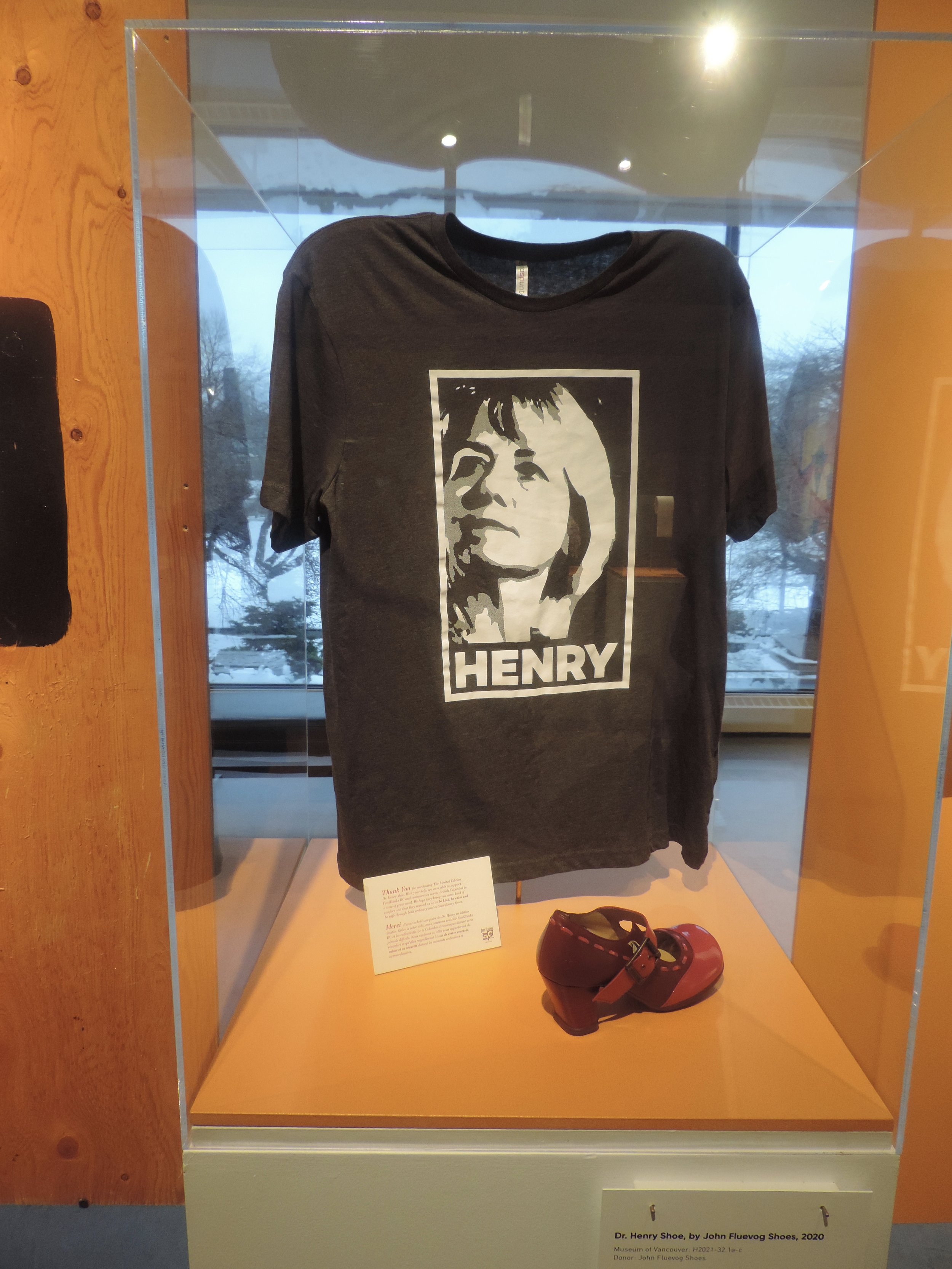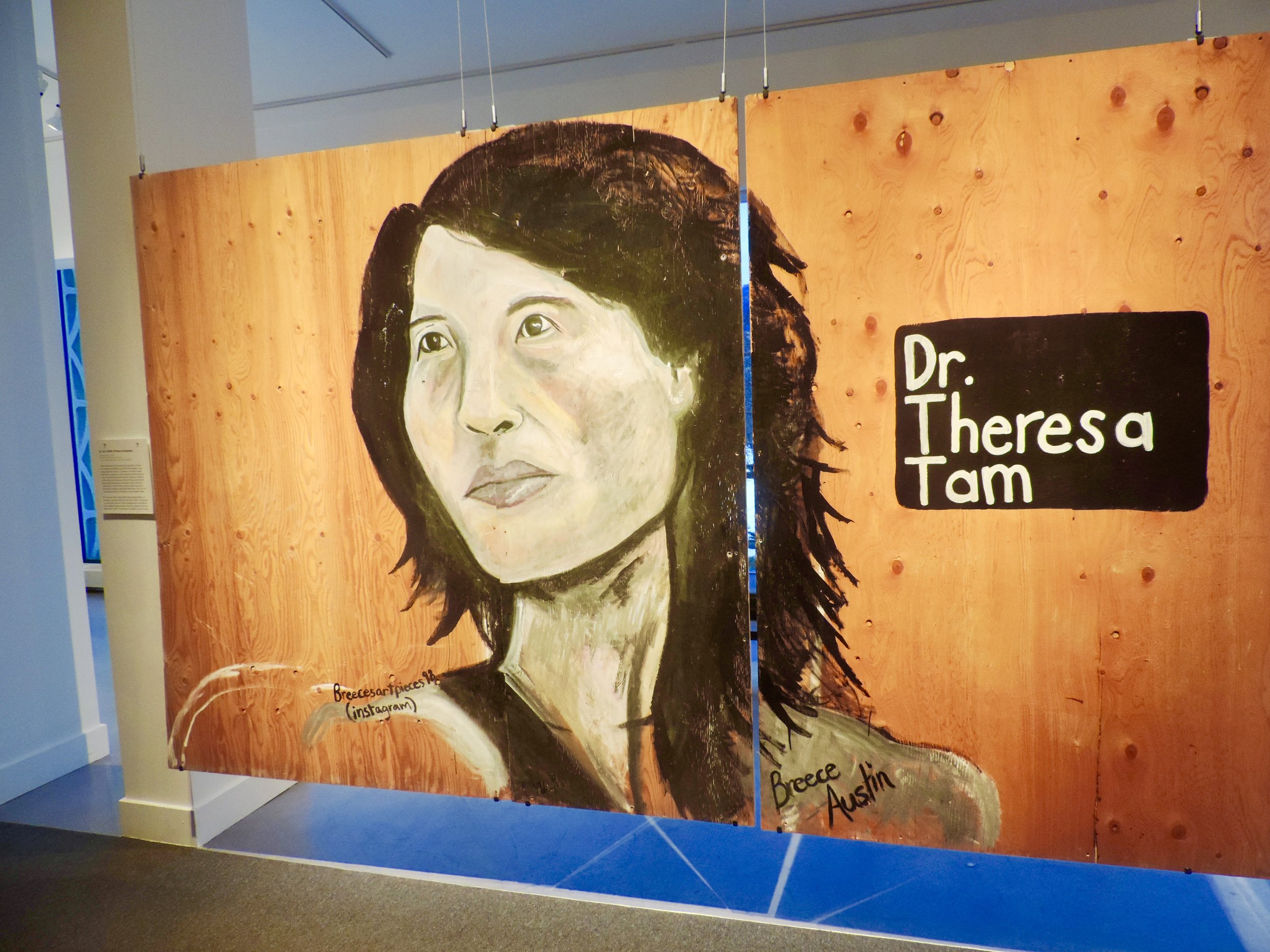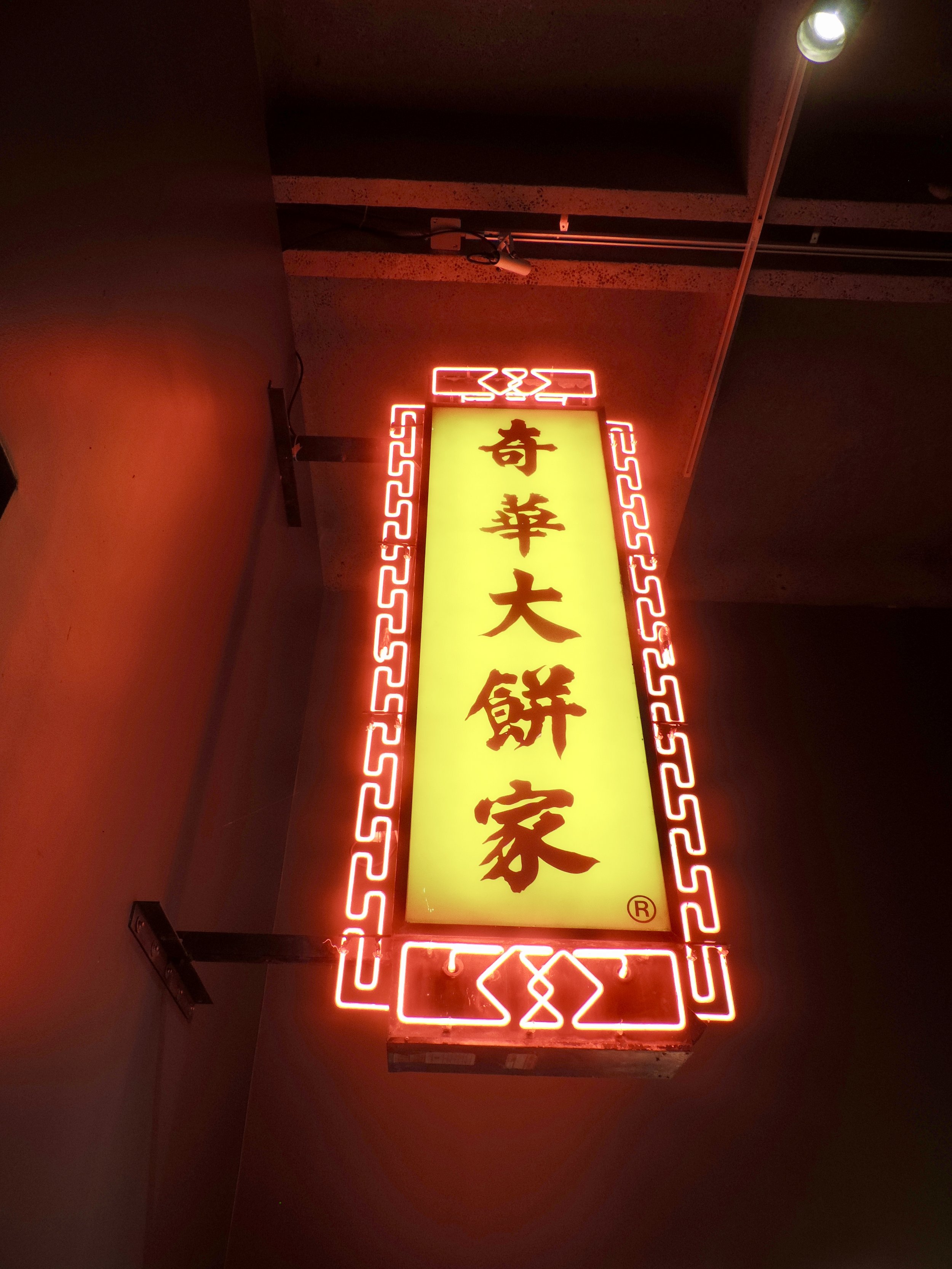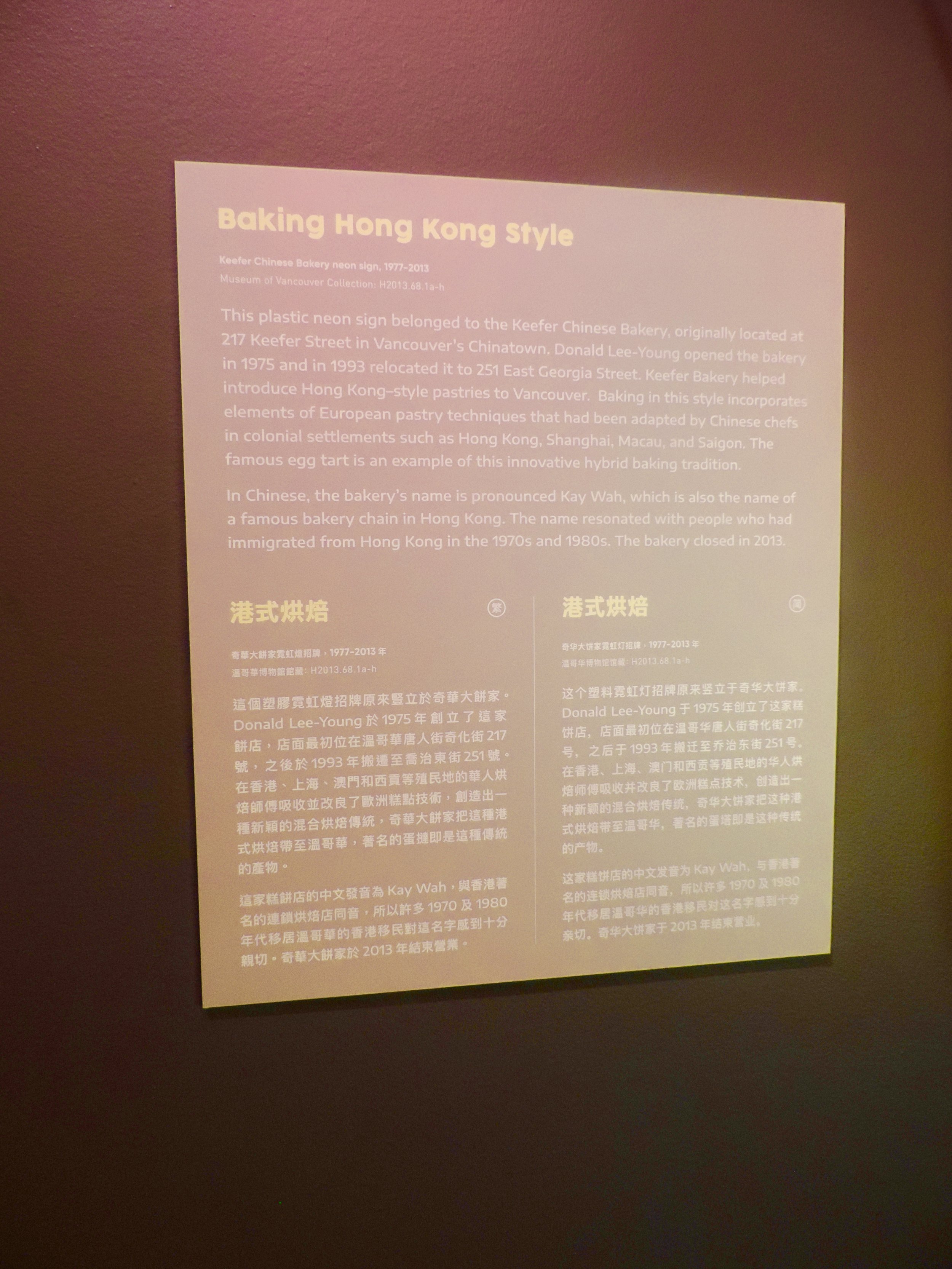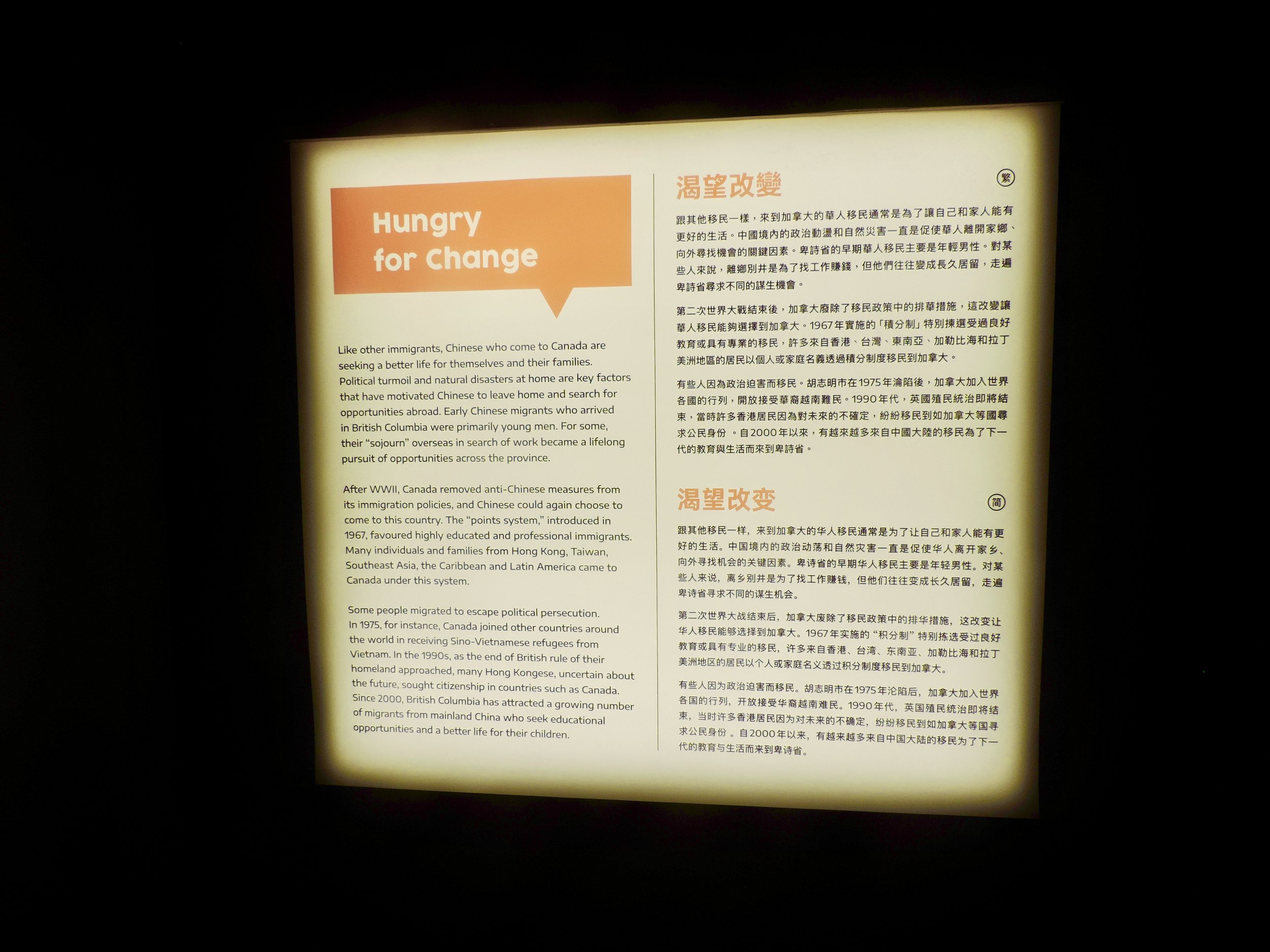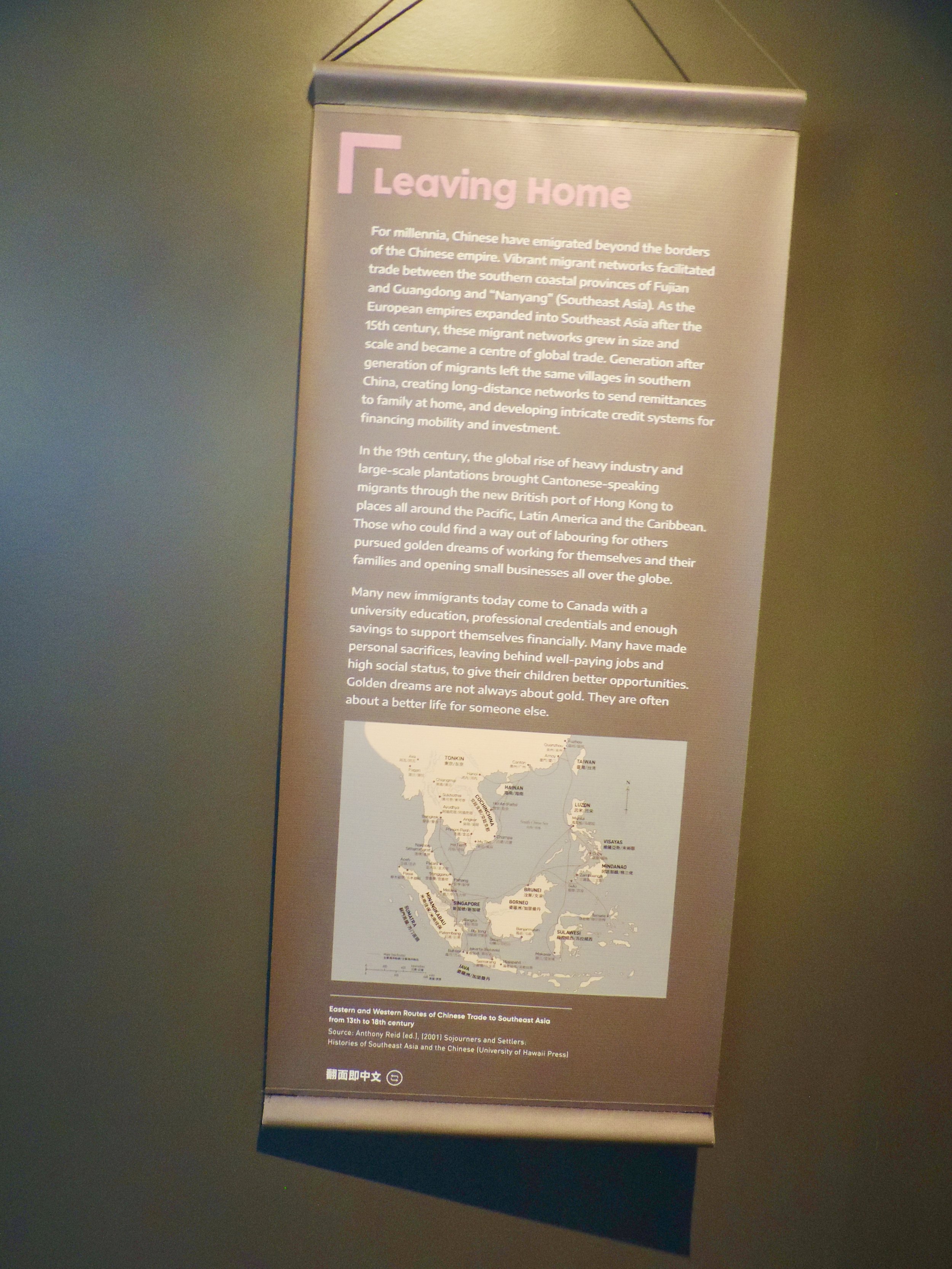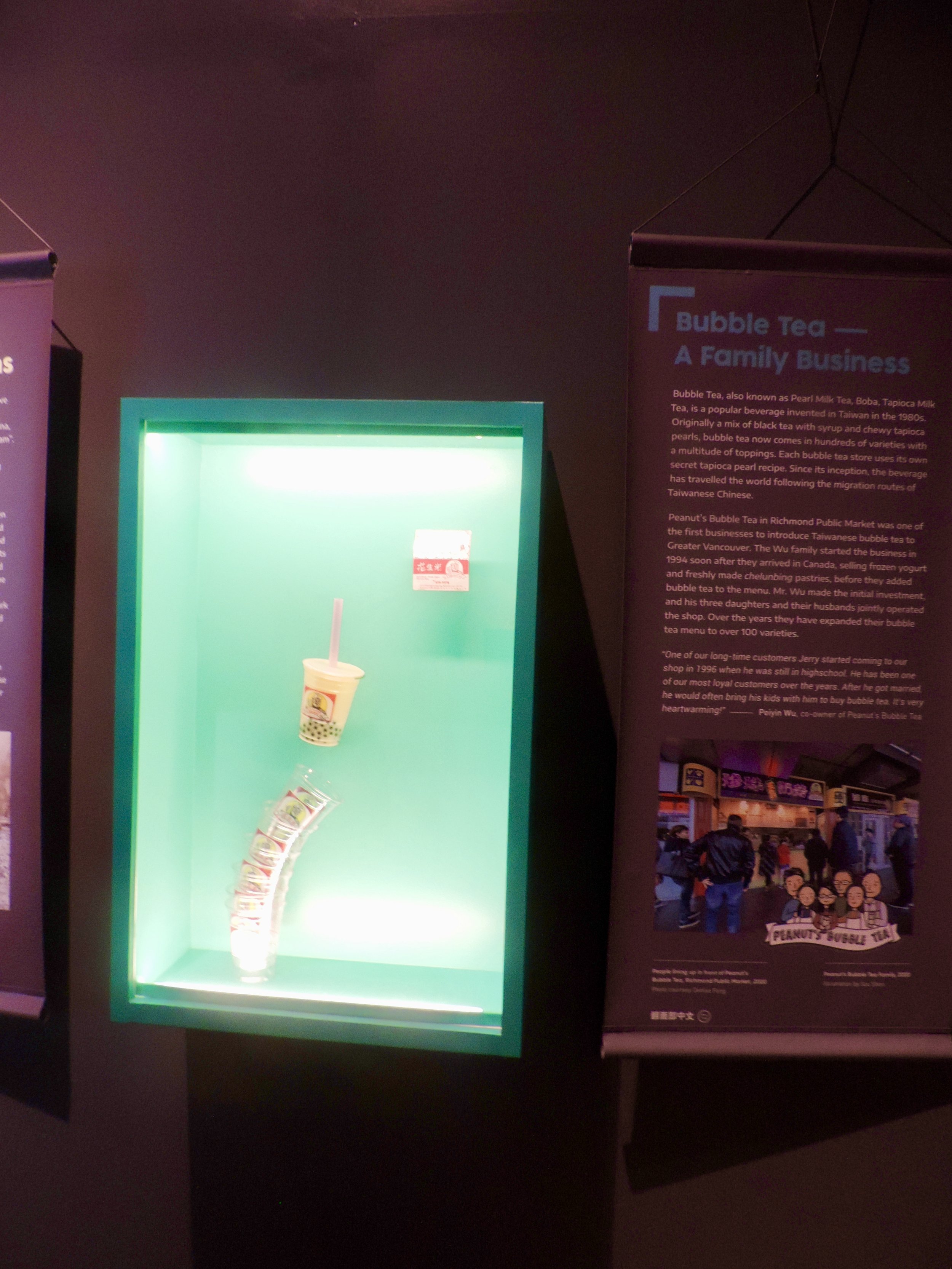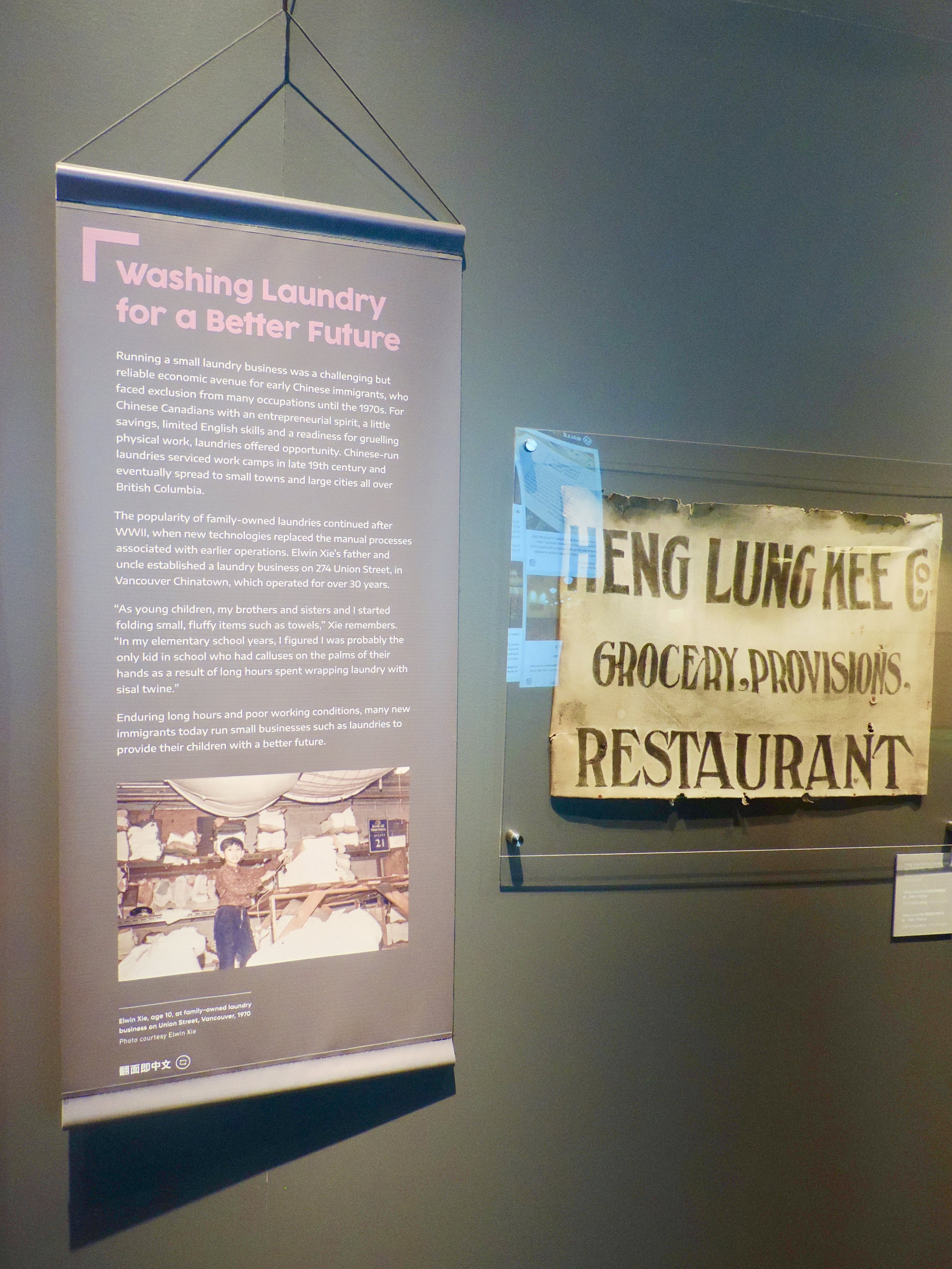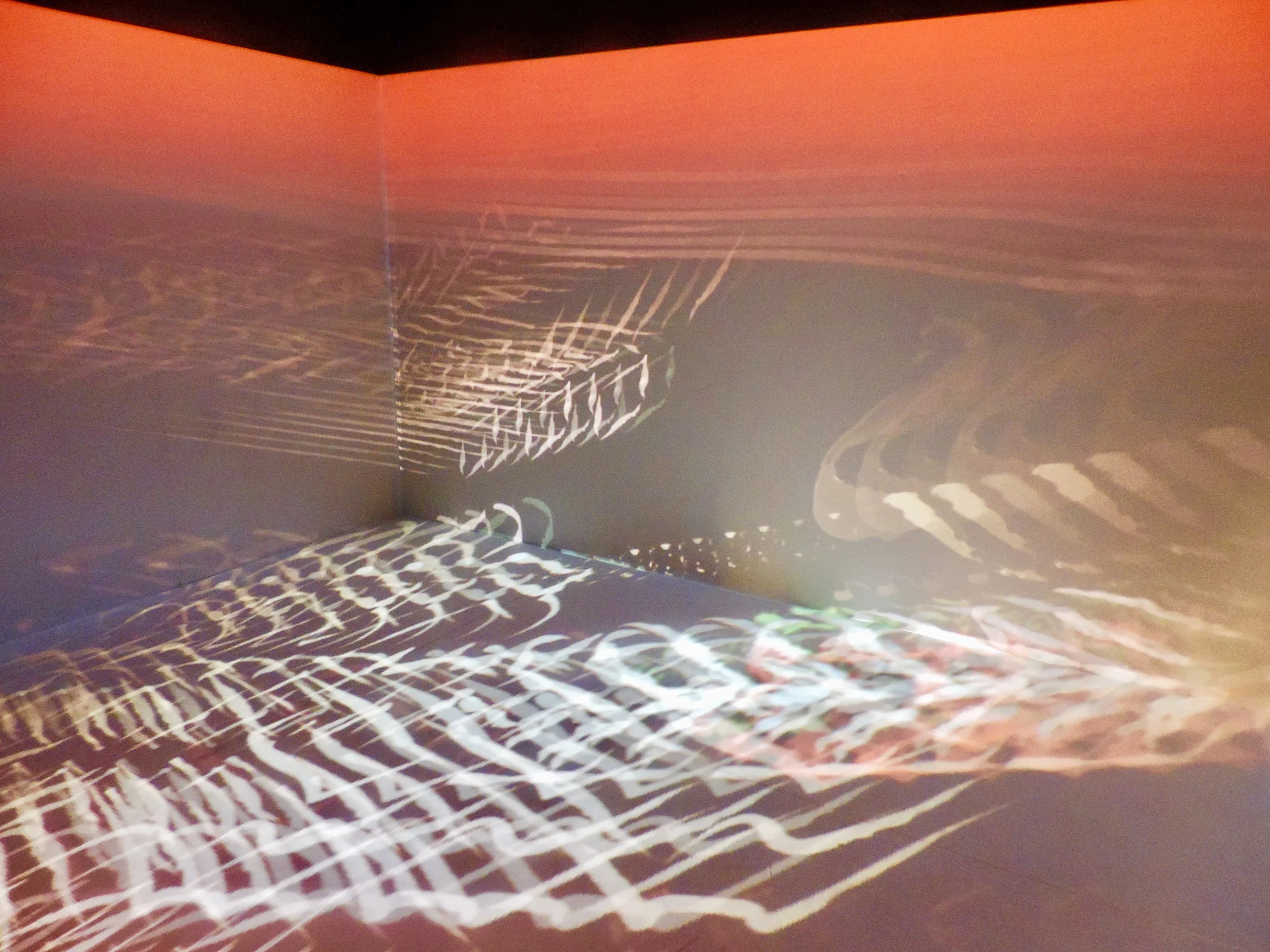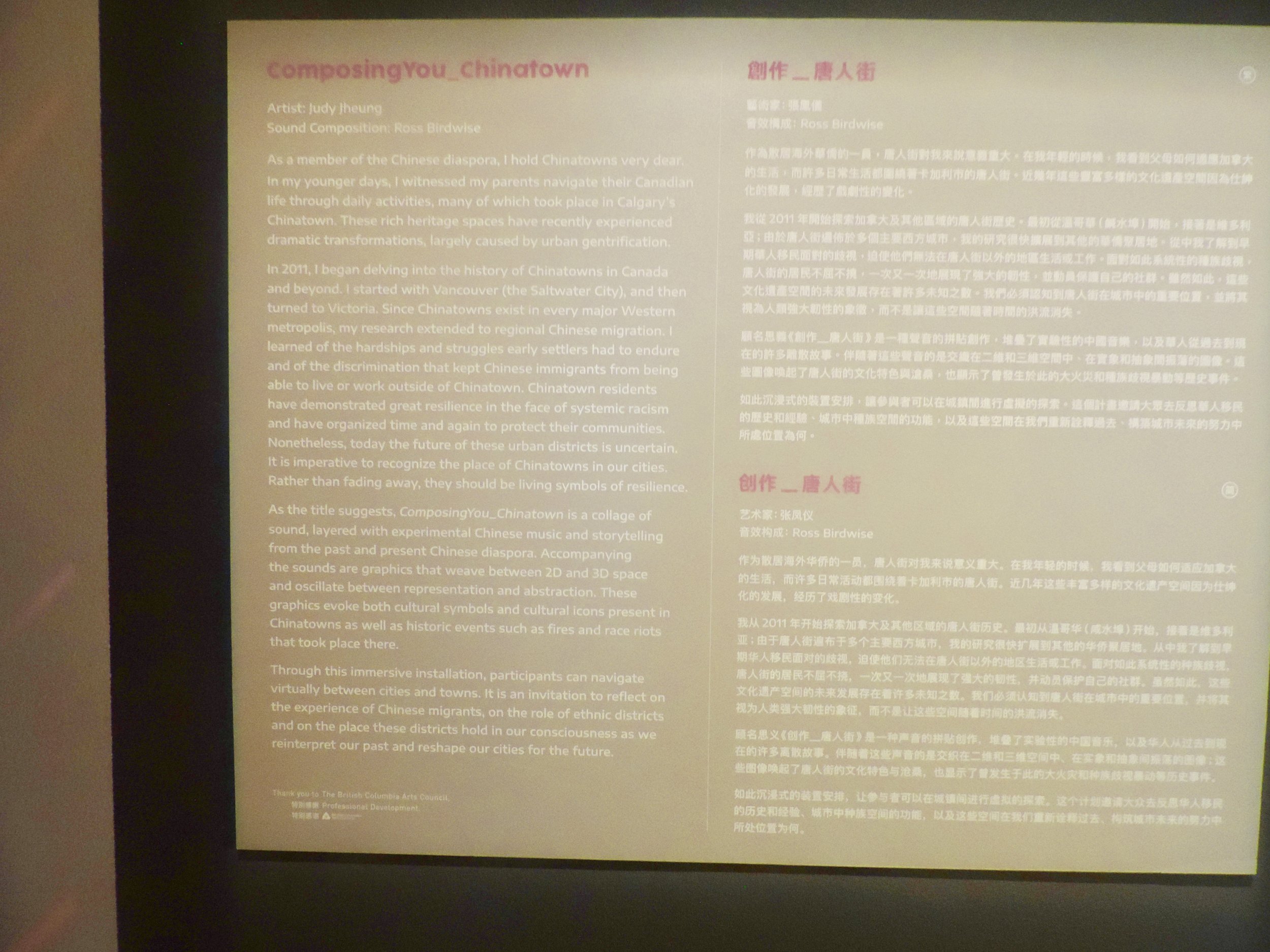Real-Time Collecting: Documenting and Remembering COVID-19
This micro-exhibition features over 20 objects recently acquired for the permanent collection at the Museum of Vancouver (MOV). These acquisitions showcase a variety of COVID-19 moments and lived experiences. “COVID collecting” will continue for many years, but “rapid-response collecting” is needed now to preserve objects that may be difficult to locate once the pandemic is over. These objects, small and large, mundane and exceptional, will help us reflect on, make sense of and hopefully learn from this pervasive state of emergency.
Notable pieces include the Bonnie Henry T-shirt and Dr. Theresa Tam painting mural.
A Seat at the Table, Chinese Immigration and British Columbia.
The Museum of Vancouver and the University of British Columbia proudly present the feature exhibition, This exhibition delves into historical and contemporary stories of Chinese Canadians in BC and their struggles for belonging. It examines food and restaurant culture to feature stories that reveal the diversity of immigrant experience and of the communities immigrants develop.
A Seat at the Table is a chance to consider the contributions and experiences of Chinese migrants and their descendants to British Columbia, a province built from the interaction of successive and concurrent waves of migration and uninterrupted occupation by Indigenous peoples. The artifacts were very realistic, and I thought the exhibition did a fairly good job of portraying Chinese culture and very personal stories through various mediums - text, exhibitions and furniture. Very relatable for many Chinese-Canadians.
Restaurants and food offer nostalgic ways of comprehending the Chinese Canadian experience in British Columbia. A close look at the food industry reveals the impact of racial discrimination on Chinese Canadians, but it also tells us much about their ability to resist, organize, seek justice and thrive. I was taken aback by a lot of the blatant anti Chinese sentiment and media portrayal of Chinese people. It definitely made me re-evaluate what it means to be part of a visible minority. Many of the cultural artifacts were very relatable, as well. I am appreciate of the strides and progress which Chinese Canadians have made, and will continue to make, in society.
Neon Vancouver | Ugly Vancouver
In the 1950s Vancouver had approximately 19,000 neon signs.
While some thought that thousands of signs were a sign of glitz and glamour, others thought they were a gaudy display that marred the city’s natural beauty. This deep civic controversy resulted in a turning point in Vancouver’s history and a change to the city’s urban landscape.
Enjoy the big city lights of Vancouver and catch a glimpse of the city from the 1950s through to the 1970s with this illuminating, literally, collection of neon signs. Re-imagine Vancouver with text that explains the history of Vancouver neons.
1950s: The ‘50s Gallery
Learn about the modest, hopeful dreams of post-war Vancouver.
1960s - 1970s: You Say You Want A Revolution
An ode to Vancouver, young people searching for an alternative way of life made the City of Vancouver the hippie capital of Canada. Kitsilano, at the time a neighbourhood with cheap housing, became home to Vancouver's radical youth. It was fascinating to observe how Vancouver has completely evolved from a hippie capital to one of the bustling, desired and expensive cities in the world.


